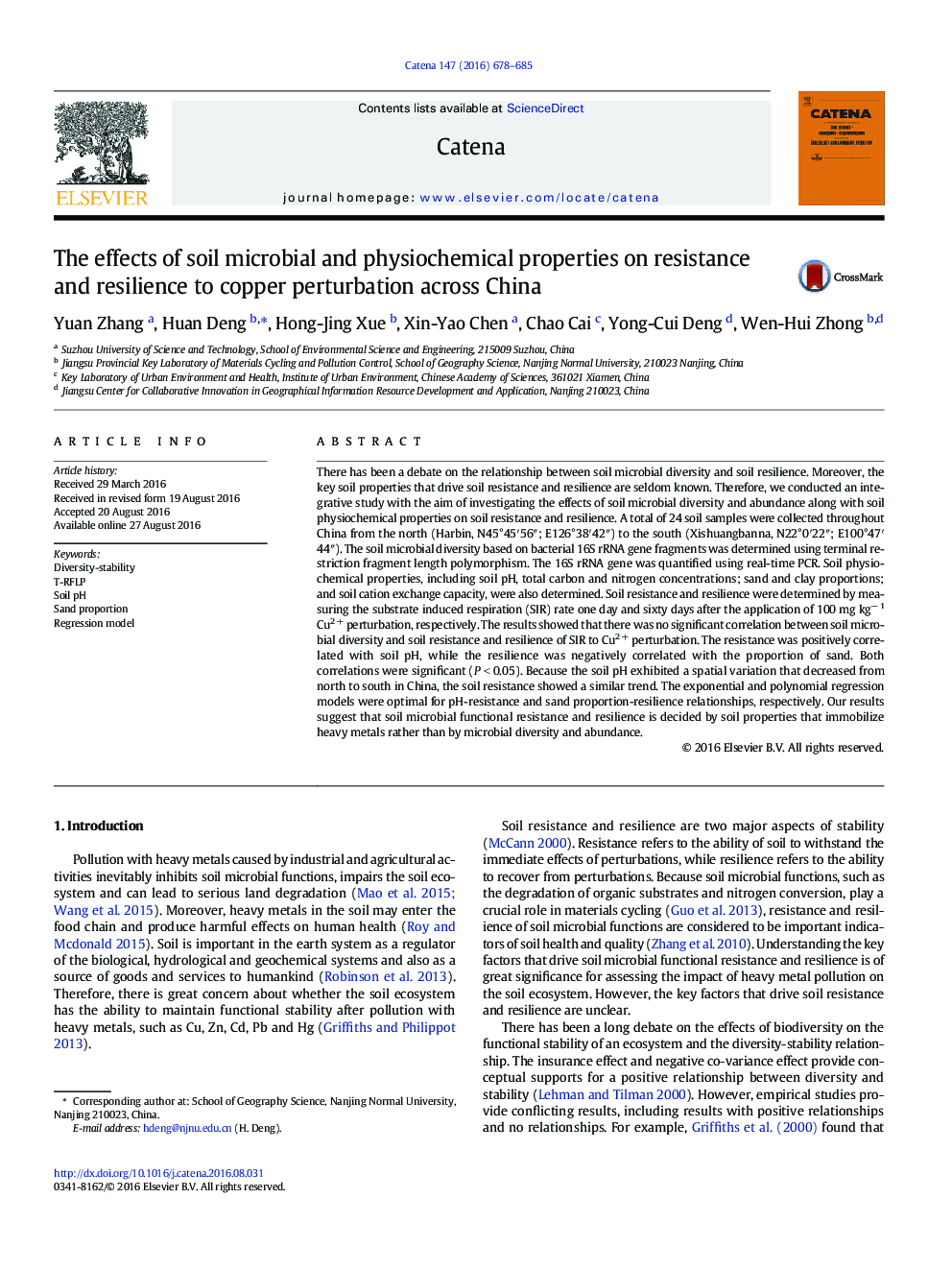| کد مقاله | کد نشریه | سال انتشار | مقاله انگلیسی | نسخه تمام متن |
|---|---|---|---|---|
| 6407791 | 1629205 | 2016 | 8 صفحه PDF | دانلود رایگان |
- We studied diversity-resilience relationship without using dilution and fumigation.
- Microbial diversity had no effects on soil resistance and resilience.
- Exponential regression model was optimal for pH and resistance the relationship.
- Polynomial regression model fitted sand proportion and resilience relationship.
There has been a debate on the relationship between soil microbial diversity and soil resilience. Moreover, the key soil properties that drive soil resistance and resilience are seldom known. Therefore, we conducted an integrative study with the aim of investigating the effects of soil microbial diversity and abundance along with soil physiochemical properties on soil resistance and resilience. A total of 24 soil samples were collected throughout China from the north (Harbin, N45°45â²56â³; E126°38â²42â³) to the south (Xishuangbanna, N22°0â²22â³; E100°47â²44â³). The soil microbial diversity based on bacterial 16S rRNA gene fragments was determined using terminal restriction fragment length polymorphism. The 16S rRNA gene was quantified using real-time PCR. Soil physiochemical properties, including soil pH, total carbon and nitrogen concentrations; sand and clay proportions; and soil cation exchange capacity, were also determined. Soil resistance and resilience were determined by measuring the substrate induced respiration (SIR) rate one day and sixty days after the application of 100 mg kgâ 1 Cu2 + perturbation, respectively. The results showed that there was no significant correlation between soil microbial diversity and soil resistance and resilience of SIR to Cu2 + perturbation. The resistance was positively correlated with soil pH, while the resilience was negatively correlated with the proportion of sand. Both correlations were significant (P < 0.05). Because the soil pH exhibited a spatial variation that decreased from north to south in China, the soil resistance showed a similar trend. The exponential and polynomial regression models were optimal for pH-resistance and sand proportion-resilience relationships, respectively. Our results suggest that soil microbial functional resistance and resilience is decided by soil properties that immobilize heavy metals rather than by microbial diversity and abundance.
Journal: CATENA - Volume 147, December 2016, Pages 678-685
